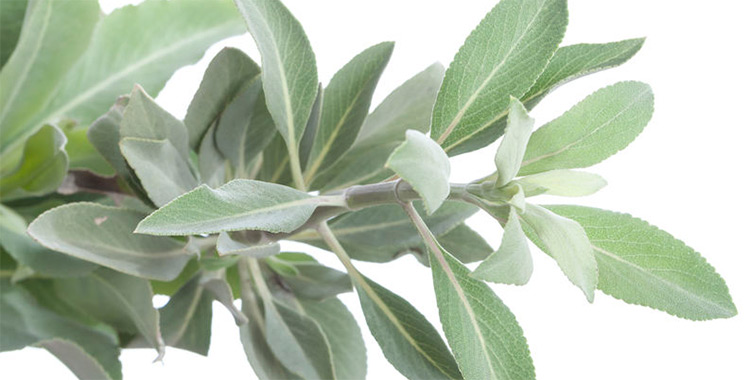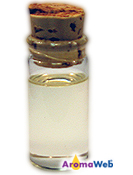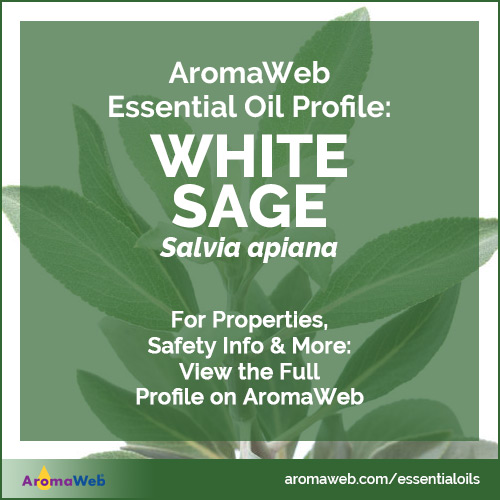White Sage Essential Oil
Salvia apiana

Description
White Sage Essential Oil is steam distilled from Salvia apiana, an aromatic shrub that is native to the Southwestern United States. White Sage Essential Oil is primarily used for its benefits in emotional, energetic and spiritual applications.
White sage is revered by Native Americans for its wellness, spiritual and energetic applications. It is considered by Native Americans to be a powerful plant that helps to cleanse a space of negativity. It is commonly used in smudge sticks.
The increasing popularity of smudge sticks and White Sage Essential Oil has lead to excessive demand. White sage has been illegally harvested in many areas, and it is becoming scarce. If you are considering the purchase of White Sage Essential Oil, please select a supplier that has ensured that it has been distilled from white sage that has been legally cultivated and harvested from farms.
Dr. Susan Leopold, the Executive Director for United Plant Savers, wrote an important article about the challenges and threats facing white sage.
I strive to use White Sage Essential Oil very mindfully as the supply of oil from ethical sources is quite limited. This is a precious essential oil that I personally use with intention when I am dealing with very negative or emotionally toxic individuals. I refrain from using it for other applications in order to conserve the oil for emotional and spiritual work.
Aromatically, White Sage Essential Oil is herbaceous, cineolic and camphorous.

Potential White Sage Essential Oil Benefits and Uses
- Subtle, Energetic and Spiritual Applications
Botanical Name
Plant Family
Common Method of Extraction
Steam Distilled
Plant Part Typically Used
Color
Clear
Consistency
Thin
Perfumery Note
Top to Middle
Strength of Initial Aroma
Medium - Strong
Aromatic Description
White Sage Essential Oil possesses an herbaceous, cineolic and camphorous aroma.
Sustainability and Conservation Status
Although the IUCN Red List has not yet evaluated White Sage (Salvia apiana), it is sensible to consider this species as threatened. Please refer to the introduction to this profile for details. Even if a plant is not listed on the IUCN Red List, the plant may still be threatened in its native habitat.
To learn more about the conservation status of essential oil bearing plants and how to use the IUCN Red List of Threatened Species, please refer to AromaWeb's Guide to Essential Oils and Sustainability.
Major Constituents
- 1,8-Cineole
- B-Pinene
- a-Pinene
- B-Myrcene
- (+)-Limonene
- B-Caryophyllene
- Camphor
See Essential Oil Safety for more details.
Source: Private Communication: Mainguy, 2001. Source cited in Robert Tisserand and Rodney Young, Essential Oil Safety (Second Edition. United Kingdom: Churchill Livingstone Elsevier, 2014), 416.
White Sage Essential Oil Safety Information
Tisserand and Young indicate that due to its 1,8 cineole content, White Sage Essential Oil may cause CNS and breathing problems in young children. They caution against using Cardamon Oil on or near the face of infants and children. Reading Tisserand and Young's full profile is recommended. [Robert Tisserand and Rodney Young, Essential Oil Safety (Second Edition. United Kingdom: Churchill Livingstone Elsevier, 2014), 416.]
General Safety Information
Do not take any oils internally and do not apply undiluted essential oils, absolutes, CO2s or other concentrated essences onto the skin without advanced essential oil knowledge or consultation from a qualified aromatherapy practitioner. For general dilution information, read AromaWeb's Guide to Diluting Essential Oils. If you are pregnant, epileptic, have liver damage, have cancer, or have any other medical problem, use oils only under the proper guidance of a qualified aromatherapy practitioner. Use extreme caution when using oils with children and be sure to first read the recommended dilution ratios for children. Consult a qualified aromatherapy practitioner before using oils with children, the elderly, if you have medical issues or are taking medications. Before using this or any essential oil, carefully read AromaWeb's Essential Oil Safety Information page. For in-depth information on oil safety issues, read Essential Oil Safety by Robert Tisserand and Rodney Young.
Shelf Life
Important Information About the Profiles
The essential oil information provided on AromaWeb is intended for basic educational purposes only. The references to safety information, test results, constituents and percentages is generalized information. Essential oils can vary greatly in composition. The data is not necessary complete and is not guaranteed to be accurate. The essential oil photos are intended to represent the typical and approximate color of each essential oil. However, essential oil composition and color can vary based on harvesting, distillation, age of the essential oil and other factors. Profiles for several CO2 Extracts and absolutes are included within the directory, and are denoted as such.
